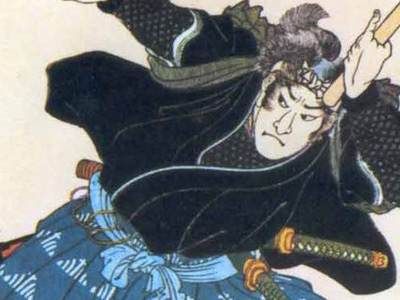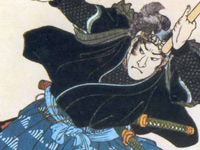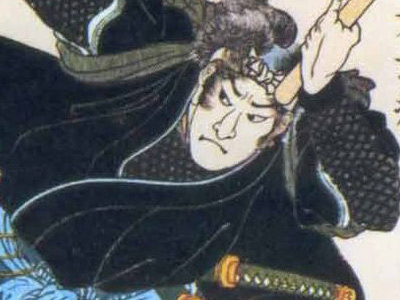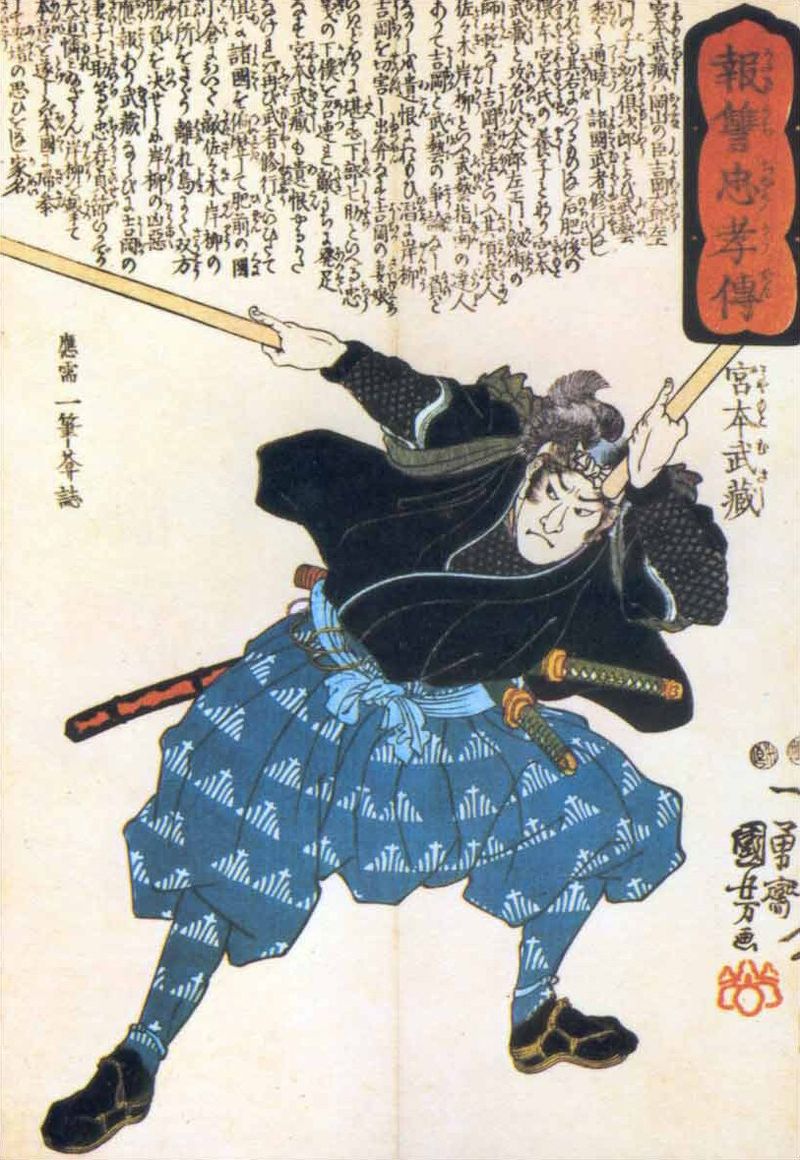Miyamoto Musashi (1584-1645)

Service
In 1614–1615, Musashi participated in the war between the Toyotomi and the Tokugawa. The war had broken out because Tokugawa Ieyasu saw the Toyotomi family as a threat to his rule of Japan; most scholars believe that, as in the previous war, Musashi fought on the Toyotomi side. Osaka Castle was the central place of battle. The first battle (the Winter Battle of Osaka; Musashi's fourth battle) ended in a truce. The second (the Summer Battle of Osaka; Musashi's fifth battle) resulted in the total defeat of Toyotomi Hideyori's Army of the West by Ieyasu's Army of the East in May 1615. Some reports go so far as to say that Musashi entered a duel with Ieyasu, but was recruited after Ieyasu sensed his defeat was at hand. This may seem unlikely since Ieyasu was in his 70s and was in poor health already, but it remains unknown how Musashi came into Ieyasu's good graces.
Other claims he actually served on the Tokugawa side are unproven, although Musashi had a close relationship with some Tokugawa vassals through his duel with Sasaki Kojirō, and in the succeeding years, he did not drop out of sight as might be expected if he were being persecuted for being on the losing side. In his later years, Ogasawara and Hosokawa supported Musashi greatly — an atypical course of action for these Tokugawa loyalists, if Musashi had indeed fought on behalf of the Toyotomi.
In 1615 he entered the service of Ogasawara Tadanao (小笠原忠直) of Harima Province, at Ogasawara's invitation, as a "Construction Supervisor," after previously gaining skills in craft. He helped construct Akashi Castle and in 1621 to lay out the organization of the town of Himeji. He also taught martial arts during his stay, specializing in instruction in the art of shuriken-throwing. During this period of service, he adopted a son.
In 1621, Musashi defeated Miyake Gunbei and three other adepts of the Togun-ryu in front of the lord of Himeji; it was after this victory that he helped plan Himeji. Around this time, Musashi developed a number of disciples for his Enmei-ryū although he had developed the school considerably earlier; at the age of 22, Musashi had already written a scroll of Enmei-ryū teachings called "Writings on the Sword Technique of the Enmei-ryū" (Enmei-ryū kenpo sho). 円/"En" meant "circle" or "perfection"; 明/"mei" meant "light"/"clarity", and 流/"ryū" meant "school"; the name seems to have been derived from the idea of holding the two swords up in the light so as to form a circle. The school's central idea is given as training to use the twin swords of the samurai as effectively as a combination of sword and jutte.
In 1622, Musashi's adoptive son, Miyamoto Mikinosuke, became a vassal to the Himeji Domain. Possibly this prompted Musashi to leave, embarking on a new series of travels, winding up in Edo in 1623, where he became friends with the Confucian scholar Hayashi Razan, who was one of the Shogun's advisors. Musashi applied to become a swordmaster to the Shogun, but as he already had two swordmasters (Ono Jiroemon Tadaaki and Yagyū Munenori — the latter also a political advisor, in addition to his position as the head of the Shogunate's secret police) Musashi's application was denied. He left Edo in the direction of Ōshū, ending up in Yamagata, where he adopted a second son, Miyamoto Iori. The two then traveled, eventually stopping in Osaka.
In 1626, Miyamoto Mikinosuke, following the custom of junshi, committed seppuku because of the death of his lord. In this year, Miyamoto Iori entered Lord Ogasawara's service. Musashi's attempt to become a vassal to the lord of Owari, like other such attempts, failed.
In 1627, Musashi began to travel again. In 1634 he settled in Kokura with Iori, and later entered the service of the daimyo Ogasawara Tadazane, taking a major role in the Shimabara Rebellion. Iori served with distinction in putting down the rebellion and gradually rose to the rank of karō — a position equal to a minister. Musashi, however was reputedly injured by a thrown rock while scouting in the front line, and was thus unnoticed.
HISTORY

RESOURCES
This article uses material from the Wikipedia article "Miyamoto Musashi", which is released under the Creative Commons Attribution-Share-Alike License 3.0.
© Stories Preschool. All Rights Reserved.










